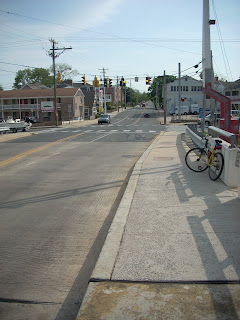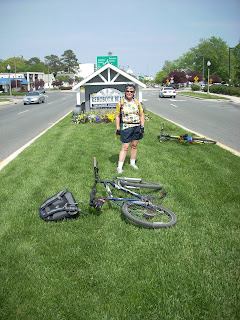It’s a little disconcerting when your only child takes on his first acting role since playing the part of Freddy Flounder as a second grader at Locke-Hill Elementary School and chooses, as a senior at St. John’s College, to assume the role of Orestes; a guy who kills his mother because he’s angry that she killed his father.
The play, known as The Eumenides, begins with Tex on center stage; where he is clearly distraught (he is wearing a mask, as are all of the other actors in the play) in the aftermath of the matricide/mariticide.
In an oblique, unintended nod to the Ancients, Betsy and I watched stone-faced from our seats in the audience at the Francis Scott Key Auditorium on the campus of St. John’s College.
To be clear; our stoniness was not due to the subject matter but rather because the dialogue was entirely in Greek (to be more precise, Attic Greek).
I can honestly say that The Eumenides was Greek to me.
The Eumenides is the final play of the three-part Oresteia. While, as the name implies, the character of Orestia is central to the story it is not the leading role. Tex spoke only once before exiting stage right, never to return (until the final credits and bows, of course).
Despite the dark subject matter the story is also one of redemption, or perhaps equivocation, as Apollo’s arguments for mercy win out over the forces of revenge.
The kids were very impressive, delivering incredibly detailed, complex lines in Greek. Furthermore, The Eumenides was followed by another dialogue-heavy play (Tartuffe), with separate actors, that was conducted entirely in French; which was, of course, also Greek to me.
Considering that SJC has no drama department or theater teachers or anything of that sort it was an impressive effort.
While it was certainly among the highlights, the play in Annapolis (and the subsequent two-hour drive home to Lewes) was only the end of our day.
We began the post-bin Laden era with a trip to Dover Air Force Base.
DAFB is the U.S. military’s only port mortuary. As such the remains of all 5,885 U.S. service members that have have been reported to have died (so far) in Iraq and Afghanistan have arrived home to U.S. soil here at this sprawling facility on the outskirts of Delaware’s capital city. Also worth noting, the remains of the 184 people killed at the Pentagon on September 11, 2001 were cared for here at DAFB.
Oddly (at least, to me, it seems odd), there was virtually no mention of the port mortuary mission that we saw anywhere at the base; just a small reference on one of the many interpretive signs at the base museum.
There was, however, plenty to see and learn at the museum about DAFB’s primary mission, which is the air mobility command that airlifts supplies and troops on missions around the world, and re-fuels aircraft in flight.
They have an impressive collection of the increasingly massive cargo planes that the USAF has developed since the base opened on Dec. 17, 1941 and we spent a couple of hours looking at the exhibits and clambering around inside some of these monsters.
They also had some non-transport aircraft that have been based here over the years including a Cold-War-era jet that was designed to deliver a nuclear bomb. The concept was that the jet would approach the target flying upward, nearly vertical to the face of the earth. The nuke would then be fired and it would start out on that same upward trajectory, beginning an arc that would (thanks to Mr. Newton) eventually carry it to the ground (and detonation) at a distant point, hopefully somewhere near the target.
Meanwhile, the jet would arc in the opposite direction, flying upside down and going as fast as possible in the other direction, in an effort to avoid obliteration in the nuclear blast.
An explanatory sign in front of the plane noted that this was not a very accurate method of delivering a bomb but, because it was a nuclear bomb, accuracy was not really all that important.
It was just a short drive from DAFB to the Delaware Capitol (which they call Legislative Hall) in downtown Dover.
There we glommed onto a tour group of middle school kids, none of whom knew the name of their current U.S. senators or the vice-president (fortunately, about half of them appeared to know who George Washington was).
The tour guide was really good and we ask her a bunch of questions (after the tour) before going into the house chamber to watch the legislators declare the month of May as “Poppy Month” (honoring the veterans of foreign wars).
Little Miss Poppy of Milton, Delaware (home of the Dogfish Head Brewery) was on hand to lead the pledge of allegiance.
From there we walked over to Kent County Courthouse (we are now two-thirds of the way finished with our quest to visit every courthouse in the state of Delaware) and went inside the “Old Capitol Building” next door to the courthouse, where we got another excellent tour from a converted Pennsylvanian.
Between these two tour guides we clarified several things about Delaware’s origins.
Delaware is quite proud of being the “first state” but that is something of a misnomer. What they are referring to is that Delaware was the first state to ratify the U.S. Constitution, in 1787. However, if you think about it there is no such thing as a “first state” per se; because the 13 colonies all became “states” and ceased to be colonies upon the declaration of independence. And, of course, they were states under the Articles of Confederation from 1781 to 1789. Furthermore (and even though our tour guide was reluctant to admit this) Delaware was the LAST of the 13 colonies to be formed, getting the official designation of its separation from Pennsylvania just one month before independence was declared in 1776.
We also discussed at some length the Mason-Dixon line, which I have been reading up on.
The primary reason that Charles Mason and Jeremiah Dixon were contracted for the survey was to settle a long-standing dispute between the Penn and Calvert families over the portion of the Delmarva peninsula that belonged to Maryland and the portion that belonged to Pennsylvania.
To make a long story somewhat shorter, the Penns (in un-Quakerly fashion) screwed the Calverts. As a result today’s Delaware is (if you can believe this) somewhat LARGER that it would otherwise have been.
Mason-Dixon were supposed to draw the southern boundary beginning here in Lewes/Cape Henlopen but “mistakenly” began 20 miles south of here at Fenwick Island (which is south of Rehoboth Beach).
Interestingly, King Charles II himself fixed the northern boundary by using a compass to draw a 12 mile arc around New Castle (which was then the county seat of what is now New Castle County).
The survey took four years (1763-67) and it left a wedge between the east-west line that forms the southern border of Pennsylvania and the 12-mile arc. It was not until an Act of Congress in 1921 that the wedge was finally and officially determined to be a part of Delaware.























